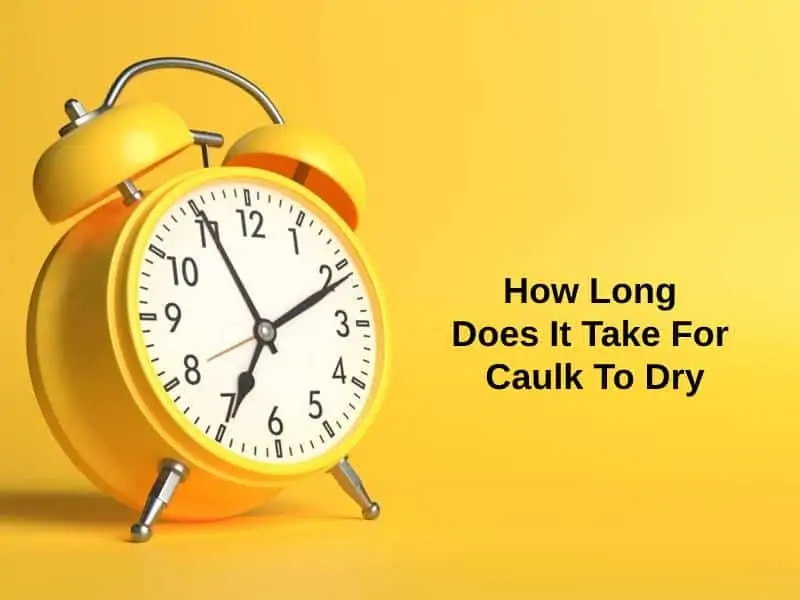Exact Answer: 1-10 Days
Caulk is a sealing material made up of acrylic, silicone, and latex. It is used to fill gaps or cracks, prevents water or bugs from entering the house through pipes, plumbing, windows, doors, etc.
Caulking is also used for construction purposes like closing the joints up in the building. It helps in reduced noise transmission, thermal insulation, and also controls water penetration in the apartments or buildings. Usually, a caulk is made up of three materials mentioned above, but there are few various kinds of caulk suiting different purposes like Acrylic Tile sealant for wet applications, vinyl latex for applying a heavier layer of caulk, etc.

How Long Does It Take For Caulk To Dry?
| Type of Caulk | Time Taken to Dry |
| Silicone Caulks/Acrylic Caulks | 1-2 Hours |
| Latest Caulks | 24 Hours |
| Polyurethane Caulks | 10 Days |
Caulks are used to fix various defaults in houses like fixing woods, fixing tile gaps, fixing taps to avoid leakage, covering the hollow areas of window panes and doors to prevent bugs entering our houses, for roof-fixing, and many more. Depending on the purpose, there are various kinds of caulks available in the market.
Since various caulks are available for various purposes, the time duration also varies. When we use a Polyurethane Caulk for joint-fixing, it is advised to keep them dry, untouched from water, and in prescribed temperature and humidity for a period of 7-10 days. Whereas, while going with tile fixing caulks like silicone ones, the time is, however, 1-2 Hours but it needs to be left completely dry and in cold conditions. After the prescribed time of sealing the tile, you can paint it or do whatever you want to do with it. In simple words, caulk after applying needs to completely waterproof for the prescribed time in order for it to function properly and serve the purpose.
The Caulk must be fresh to use. The older the caulk is, the degraded will be its quality for the application. Most companies, therefore, put an expiration date on the caulk tubes. Ideally, a polyurethane caulk must be used within 12 months of its date of manufacturing for the desired results.
Why Does It Take That Long?
The duration of drying of caulk depends on various factors like temperature, humidity, and the composition of the caulk. Depending on the chemical formulas of different kinds of caulks, the duration varies. However, there are other factors like temperature and humidity also play a strong role.
It is prescribed to give a temperature ranging in between 40-80 degrees of Fahrenheit to let the caulk dry and perform its purpose. Therefore, the duration increases during winter and summer as the temperature falls beyond the prescribed limits. As humidity increases, the time also increases. These two factors combined with the chemical properties of different kinds of caulk results in various durations of drying which could be few hours and could even extend to 10 days.
It is also suggested to keep the caulk away from water and moisture after applying as these factors play with the chemical composition and temperature of the substance, due to which the caulk loses its sealing property and becomes moisturized. This, in turn, increases the time required for the caulk to dry.
After the dry time, begins the cure time. The dry time is the duration taken by the material to let its moisture fade. The caulk after dry time will be dry to the touch. But during the cure time, it starts showing its effect on the purpose for which it is applied. Hence, it is always advised to be cautious till the cure time ends.
Conclusion
While applying caulk for home decor purposes, constructions, or some minute fixations, caulk can be chosen suitably as per their different functions and chemical compositions. Few factors that must be kept in mind while applying it includes the temperature range, facility of waterproofing, prescribed level of humidity, and dry time of various kinds of caulks. Since the dry time is the only time that makes the caulk dry to the touch, it is advised to wait till the cure time ends. Precautions must be taken carefully till the cure time so that the caulk does not lose its property and serves the best purpose.